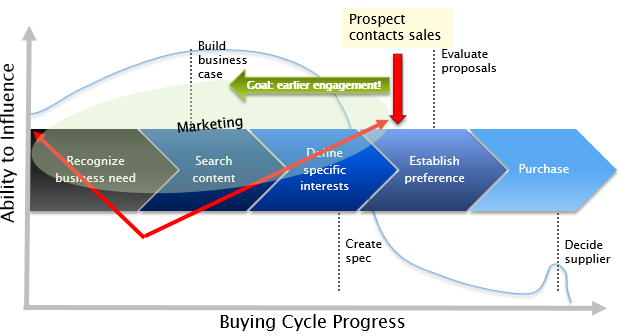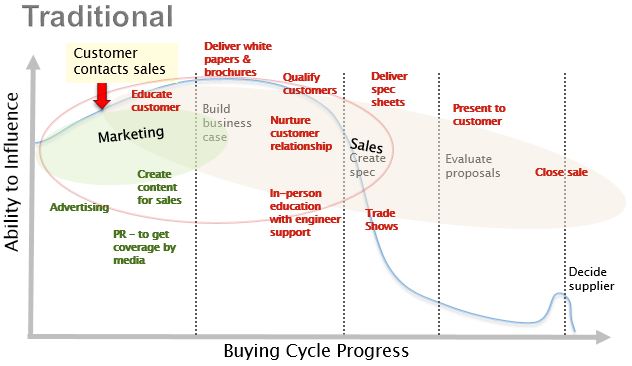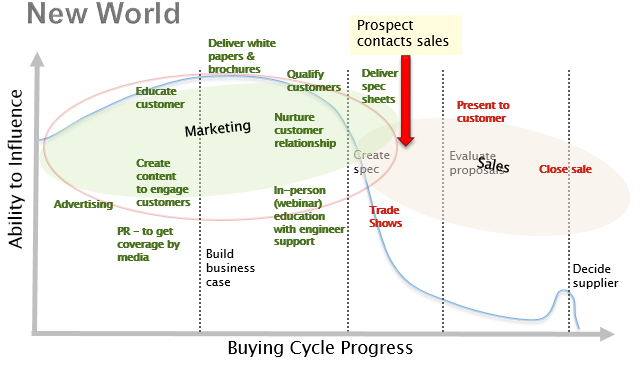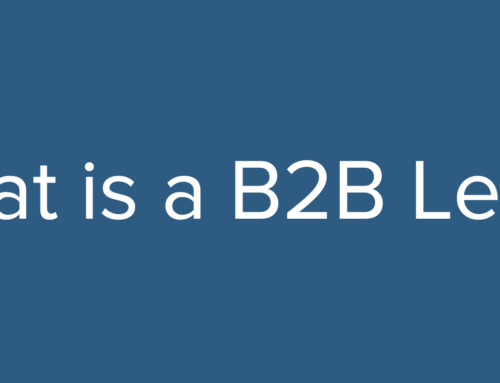In the first post on this topic, “Marketing in the new world – the cheese is moved,” I covered the first marketing new world order (my term) that states: that technology has completely and radically changed the way your potential and existing customers engage with and purchase from your company.
Your prospects don’t have to rely on sales personnel to gain the information they need early in the buying process to shape their needs and requirements. However, the second marketing new world order is ALL about making that happen anyway –
The spoils will go to the suppliers who commit to engaging customers on their terms – the supplier who can leverage marketing to drive that engagement to sales.
You’d like to believe that EVERY single sales person is ensuring that they get in early and influence prospects as they consider what they need and build a list of requirements. For existing customers, the truth is this may or may not happen based on the quality of the sales person’s efforts. But for prospects you don’t even know and have not yet even raised their hand as a lead, marketing, not sales, is the key to driving earlier engagement.
The changing role of marketing
In this new world, the primary goal of marketing related to demand generation is to drive sales engagement (Figure 1) into the earlier buying process stages.
Figure 1 – Driving Earlier Sales Engagement
So, how does this “change” the role of marketing?
Figure 2 below provides a view of traditional (prior to web/search proliferation) marketing. The figure uses the same Buying Influence graph we have been using in this series with the curved line representing a supplier’s ability to influence a prospect over the course (time being left to right) of the buying cycle. The green items are marketing activities in the traditional environment – advertising, PR, and creating content (e.g., sales sheets, brochures) that sales would deliver to customers in various formats. That made sense in a world where the sales person was the conduit of information for the prospect.
Figure 2 – Traditional Marketing Services
Let’s contrast that with Figure 3 (below). With the prospect proactively contacting sales at a later stage of their buying cycle (without any intervention), today’s marketing owns a completely different purpose and responsibility in the sales process. The green activities listed are all now directly facing the customer (not through sales) and the purpose of all of these activities is to drive sales engagement back to that earlier stage.
Figure 3 – New World Marketing Services
Today’s marketing has a new urgent purpose, that in the old world, did not exist in the same way. That purpose is to educate and interact with those prospects that are busy gathering information, researching, and formulating requirements, in order to cause them to:
- continue to ask for more and engage more with your company, and
- request to speak with sales / enter into a true sales opportunity process, and/or
- to buy your product
Marketing is not taking the place of sales. Sales cannot abdicate accountability on finding, nurturing, and closing deals. However, marketing in the new world can connect sales people with some prospects and reconnect customers who are engaging in a buying process on their own terms (searching for and receiving information digitally in the early stages of that process).
New world order skills
With that new purpose, comes the daunting tasks of developing expertise across a “much” wider range of marketing skill sets. As a new world marketer you must learn or learn to manage skills such as:
- SEO, PPC, Remarketing expertise
- Ad copy creation for multiple tactics across multiple media types
- Content creation project management and content creation to engage prospects (not sales sheets and speeds/feeds information, but content that addresses buyer needs)
- Utilizing content for blogs, email marketing, webinars and all of the nuances and project management associated
- Email marketing best practices and legal compliance
- Lead nurturing
- Landing page development and effective conversion methodology
- Digital marketing planning and execution
- Digital marketing metrics and analysis
- Lead management
The point is that these new skills are essential in leveraging marketing dollars and efforts to engage (marketing campaigns/tactics) with prospects who are searching for information and to convert them to live leads who want sales contact and get sales contact (lead management).
As a full view of the broader role of marketing today, Figure 4 provides a more complete view from a skills perspective across the full spectrum of services/deliverables that marketing is responsible for delivering. These services are essential both in early marketing stages to engage prospects and in support of sales once they engage.
Figure 4 – Marketing Skills, Expertise, Deliverables in the new world
It’s definitely a new world!
Engage prospects, move that contact point
As was stated earlier, it would be ideal if your sales team could find and engage with every prospect as they first start thinking about purchasing a new solution. However, in today’s world that provides digital gateways to vast amounts of information, that is just not going to happen without intervention.
The spoils will go to the suppliers who are willing and able to engage with customers on their terms, where they search, and with content that matches where they are in the buying cycle. And the prime catalyst to making that happen, is (a) effective digital marketing, and (b) content that engages prospects the way they buy vs. the way suppliers sell.










